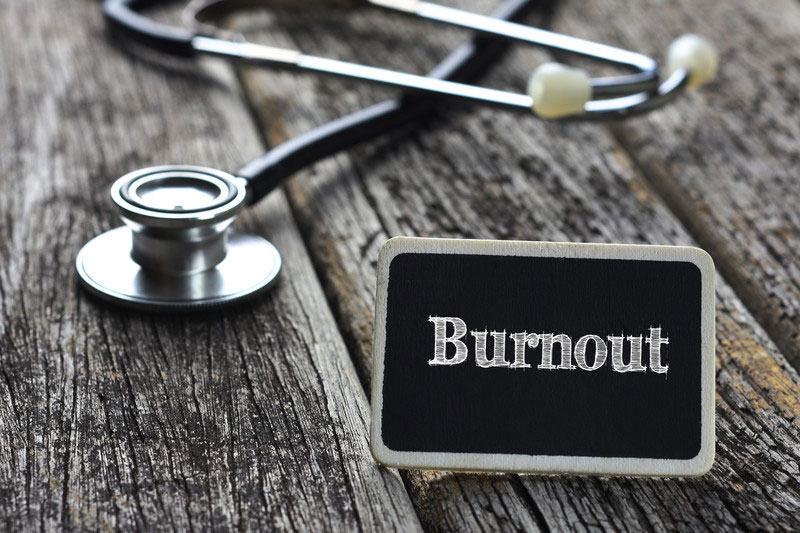Burnout is a serious concern for healthcare providers such as doctors, nurses and other clinicians. It signifies physical, mental, and emotional exhaustion that is brought about by many factors and needs to be addressed at the earliest. Burnout is serious because it creates a sense of despair and undermines motivation. Apart from working long shifts, nurses may also be in charge of documentation, transcribing physicians’ notes or assisting with the EHR. Where physicians utilize medical transcription services, the documentation workload can be considerably reduced but this is not always the case. When nurses experience burnout, the impact filters down to the patients also, and hospitals with high burnout typically have lower patient satisfaction.

Studies and surveys list the following major causes for nurse burnout.
- Long working hours: This could lead to fatigue and more chances of error in nursing.
- High-stress environments: Nursing responsibilities have increased over the past decade because of advancements in technology and documentation. Often hospitals are short-staffed, which makes it very hectic for nurses. Many of them are stressed out and overwhelmed, which could ultimately lead to burnout.
- Emotional issues that come with witnessing sickness and death: Daily exposure to illness, grief, and death could place huge emotional burden on nurses. This could wear them down and result in burnout if not addressed properly.
- Selfless attitude: Nurses are dedicated and selfless and always put others first. They may neglect their own needs and become worn out with the passage of time.
According to a 2017 Kronos survey of registered nurses (RN) in a hospital, more than 63 percent reported burnout. The latest Press Ganey report, “Performance Insights: Resilience for a Multigenerational Nursing Workforce” points out some the factors that lead to burnout and its remedy “resilience.” According to the researchers, this resilience differs according to nurse demographics such as generation, role, and shift.
Decompression and Activation
Press Ganey introduced an eight item tool to measure resilience and the tool has two separate subscales – one, to measure the degree of respondents’ engagement with work (activation) and two, to measure respondents’ ability to disconnect from work (decompression).
They reviewed the activation and decompression scores of 17,483 nurses from 145 hospitals who completed the Nursing Excellence module of their organization’s 2017 Press Ganey Employee engagement survey. The results were categorized according to generation (millennial, 1980 to 2000; Generation X 1965 to 1979; baby boomer 1946 to 1964) day or night shift, and manager status.
The activation subscale is based on respondents’ level of agreement with the following statements:
- I care for all patients equally even when it is difficult
- My work makes a real difference
- I see every patient as an individual with specific needs
- My work is meaningful
The decompression subscale is based on respondents’ level of agreement with these statements:
- I can enjoy my personal time without focusing on work
- I rarely lose sleep over work issues
- I can free my mind from work when away from it
- I am able to disconnect from work communications during my free time
Apart from this, activation and decompression were evaluated using 2017 NDNQI RN survey results obtained from 161,451 nurses working in 643 hospitals. The following statements were used for the purpose.
- I have what I need in my job so I can make a contribution that gives meaning to my life (activation)
- Overtime hours in my last shift (decompression)
These results were categorized by the role of nurses such as nurse manager, staff nurse, charge nurse; and generation.
Important Findings
The researchers found that activation and decompression varied among nurses according to generation, nurse manager status, shift, and nurse tenure. The key findings of the report are:
- Millennial nurses have the lowest levels of activation.
- Nurse managers have better activation than non-managers.
- Non-managers are able to decompress more than managers.
- Millennial nurses working the night shift have an even further activation disadvantage.
- Both non-managers’ and nurse managers’ ability to decompress is highly connected with their view of stress and the organization’s support of work-life balance.
- Across all generations, activation and decompression are highly associated with nurses’ intention to stay in their jobs.
- Drivers of activation and decompression vary by generation and manager status. Nurse managers that have a greater level of autonomy may report higher levels of activation than staff nurses. They may have lower levels of decompression because of the additional responsibilities associated with the role of a manager.
How to Address the Problem
According to the researchers, the following interventions can help promote resilience:
- Meaningful recognition.
- Interventions that meet different needs of different nursing groups like night shift nurse, millennials and nurse managers.
- Resilience training for nurses at all levels.
- Resilience-focused support and resources to all nurses in all shifts.
- Focus on relationship-building activities and opportunities for better nurse social support.
- Train nurse leaders to support staff nurses’ alignment with professional purpose.
- Include resilience building burnout prevention strategies in the operational budget.
A medical transcription company assisting physicians, hospitals and other providers understands the value of reliable support for those in the healthcare industry. Just as other clinicians, nurses could also benefit from valuable support and increased focus on self care. They must give importance to their mental health and find time to relax and also ensure that they get sufficient sleep. Ideally, they should not ignore their feelings of stress or grief and must find somebody they can talk to freely. This will help avoid burnout to a great extent and make progress in their healthcare career.


